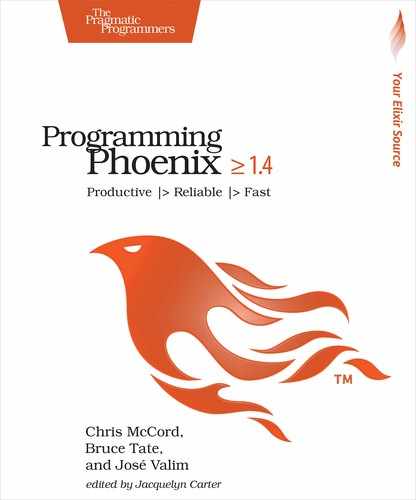Wrapping Up
Amazingly, this is the last chapter dealing with our Rumbl application! In this chapter, we tested the most sophisticated features in our entire application stack. You probably noticed that the functional nature of Phoenix made testing the application much easier than you might have expected. Our tests run quickly, and they’re compact, thanks to the helpers that abstract concepts like assert_reply, assert_broadcast, and assert_receive. Here’s what we accomplished:
-
We tested our OTP layer for our InfoSys OTP application.
-
We split out an independent caching layer for performance.
-
We built a specific backend rather than a dynamic stub or mock to keep our tests isolated, as our unit and integration tests should be.
-
We tested our sockets authentication code.
-
We used the Phoenix testing support to test our channels.
By no means is this testing story complete. We didn’t cover user acceptance testing. Nor did we cover performance testing. We did accomplish quite a bit in a short time. These kinds of concurrent, interactive applications can be notoriously difficult to test.
In the next chapter, we’ll wrap up. We’ll cover some features that didn’t make it into our application such as internationalization. We will also cover the newest Phoenix library, LiveView, and learn how you can build whole pages without MVC-style controllers or JavaScript. Then, we’ll take a brief look at what’s next for the Phoenix team.
We’re not quite done. Let’s go!
